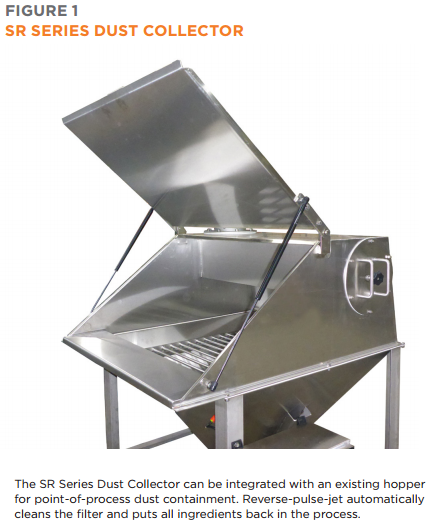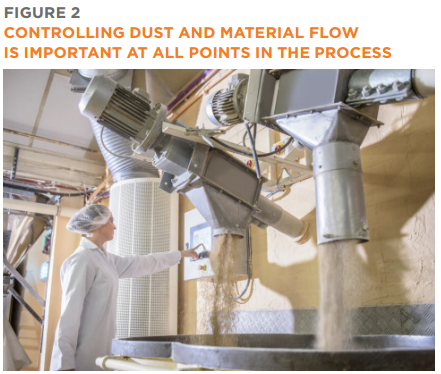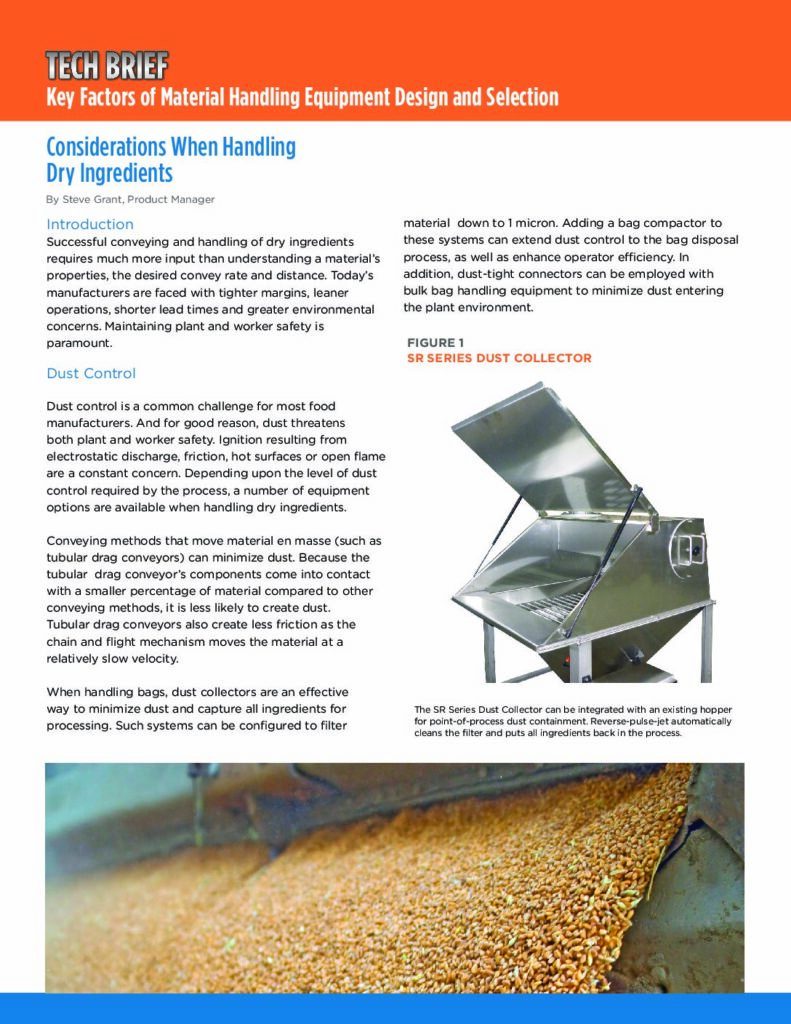
Considerations When Handling Dry Ingredients
INTRODUCTION
Successful conveying and handling of dry ingredients requires much more input than understanding a material’s properties, the desired convey rate and distance. Today’s manufacturers are faced with tighter margins, leaner operations, shorter lead times and greater environmental concerns. Maintaining plant and worker safety is paramount.
DUST CONTROL
Dust control is a common challenge for most food manufacturers. And for good reason, dust threatens both plant and worker safety. Ignition resulting from electrostatic discharge, friction, hot surfaces or open flame are a constant concern. Depending upon the level of dust control required by the process, a number of equipment options are available when handling dry ingredients.
Conveying methods that move material en masse (such as tubular drag conveyors) can minimize dust. Because the tubular drag conveyor’s components come into contact with a smaller percentage of material compared to other conveying methods, it is less likely to create dust. Tubular Drag Conveyors also create less friction as the chain and flight mechanism moves the material at a relatively slow velocity.
When handling bags, dust collectors are an effective way to minimize dust and capture all ingredients for processing. Such systems can be configured to filter material down to 1 micron. Adding a bag compactor to these systems can extend dust control to the bag disposal process, as well as enhance operator efficiency. In addition, dust-tight connectors can be employed with bulk bag handling equipment to minimize dust entering the plant environment.

EQUIPMENT DESIGN AND MATERIAL CONSTRUCTION

Other factors to consider when handling dry food ingredients deal with the design of equipment and materials used in their construction. For example, does the process require sanitation or washdown? Will the ingredients flow in the same manner as it passes through the equipment? Is the material abrasive?
There is a wide array of options available to effectively meet sanitation standards, which may include various materials for construction and finishes. Likewise, materials for construction and the design of the conveyor or other equipment can reduce wear from abrasive materials.
EASY TO OPERATE
Operators who, in the past, may have focused in only one aspect of a process may now be responsible for multiple pieces of a process as manufactures seek productivity gains. To reduce training required and reduce errors that can result in wasted batches or operator injury, equipment should be intuitive and have safeguards. Programmable logic controls (PLC) help ensure batching consistency and maintain ease of use.
SUMMARY
Handling dry ingredients is more complex than simply moving product from point A to point B. Use of systems and processes that assure safe and efficient processing of materials are just as important. Options related to dust control, safety and efficiency are important considerations for food manufacturers handling dry ingredients.
